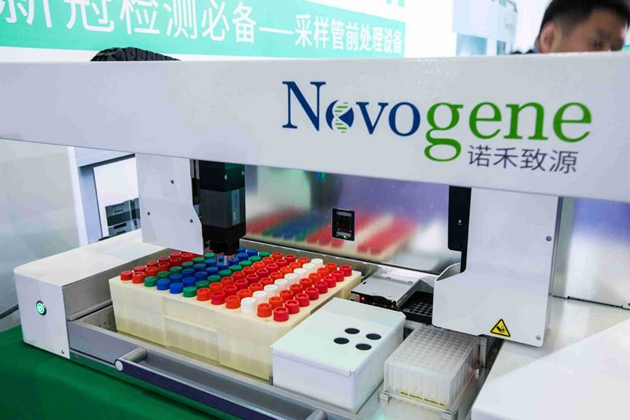Innovation gives Chinese biopharma edge on global stage

Novogene is a Beijing-based domestic provider of genomic services and solutions. [Photo provided to China Daily]
"By collaborating with multinational industry leaders for commercial interests outside of China, we wanted to use their strength to push forward the innovative medicine to the market, even the global market, in a swift manner," said Zang Jingwu, founder and chairman of I-Mab, which is dedicated to novel and highly differentiated biomedicine development and was listed on the Nasdaq in January 2020.
Explaining the advantage of the CD47 antibody to win over AbbVie's investment, Zang said that clinical trials in the US proved its advantages of maximally reducing the occurrence of anemia among patients, which differentiated it from all other alternatives during R&D so far.
"This is a globally competitive antibody with unique characteristics. We have fairly high expectations on this future product," he said.
By the end of this year, the company will have altogether conducted 16 clinical trials in China and the US, simultaneously. Many of them will be phase-II or phase-III for innovative candidates from a mature pipeline, Zang said.
"Clinical trial data from the US can better help us win opportunities for future collaboration with leading multinational companies so that we can play up our advantages to make our products stronger," he said.
Zang said the startup has evolved from an early-stage discovery company into a clinical stage company. "The company's plan is to further develop into a China-rooted global enterprise covering entire industrial chains over the upcoming three years."
Shen Huaqiong, CEO of I-Mab, said that the company's ambition is to serve global innovation. "Our enterprise is headquartered in Shanghai but we have sites in Beijing, Hong Kong and Maryland (in the US) so that we can collaborate globally by availing of their respective advantages," she said.
Experts said that the country's reform of the drug regulatory system and drug review and approval mechanism since 2015 has prompted the pharmaceutical innovation ecosystem to basically take shape.
Other measures, including a modern management method of clinical trial institutions, encouraging basic research and strengthening protection over intellectual property of drugs, also led to significant improvement in the environment for China's pharmaceutical innovations, experts said.
Ma, who is also director of the Harbin Blood Disease and Tumor Institute of Harbin First Hospital, said that China is currently in an explosive era of biopharmaceutical development. For example, there are more than 50 PD-1 inhibitors-potential tumor therapies-being developed by domestic enterprises.
"Homogeneous competitions should not be necessarily discouraged as they can often benefit patients by bringing therapy options at lower prices," Ma said.
Shen Lin, vice-president of both Beijing Cancer Hospital and the Beijing Institute for Cancer Research, said she observed that most Chinese biotech startups start from local needs while having global vision.
"That'll also attract leading multinational companies' rising attention to Chinese patients' unmet needs," she said.
For example, Medtronic, a US-based medical technology company, reached a strategic collaboration with Beijing iTrason Technology Co Ltd-a high-tech enterprise specializing in ultrasound imaging devices-in April to jointly improve the accessibility of ultrasound-guided percutaneous transluminal angioplasty in China.
Inspired by the local startup's tablet ultrasound technology, the partnership aimed to help doctors maintain valuable vascular access resources for patients with end-stage renal diseases who rely on hemodialysis and ultimately improves the quality of life for the patients, Medtronic said.
The partners will also jointly promote the application of the technologies to primary medical institutions so that front-line healthcare workers can provide better medical services to the hundreds of thousands of patients relying on hemodialysis in China.










